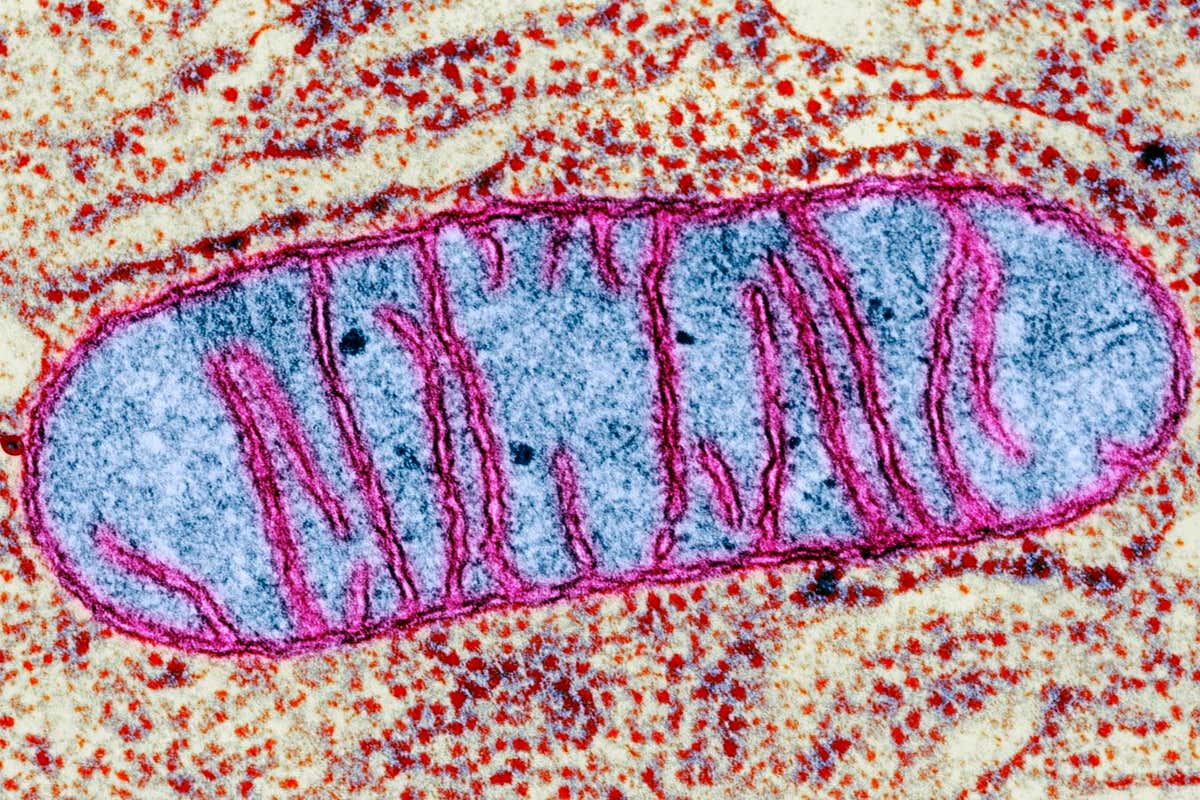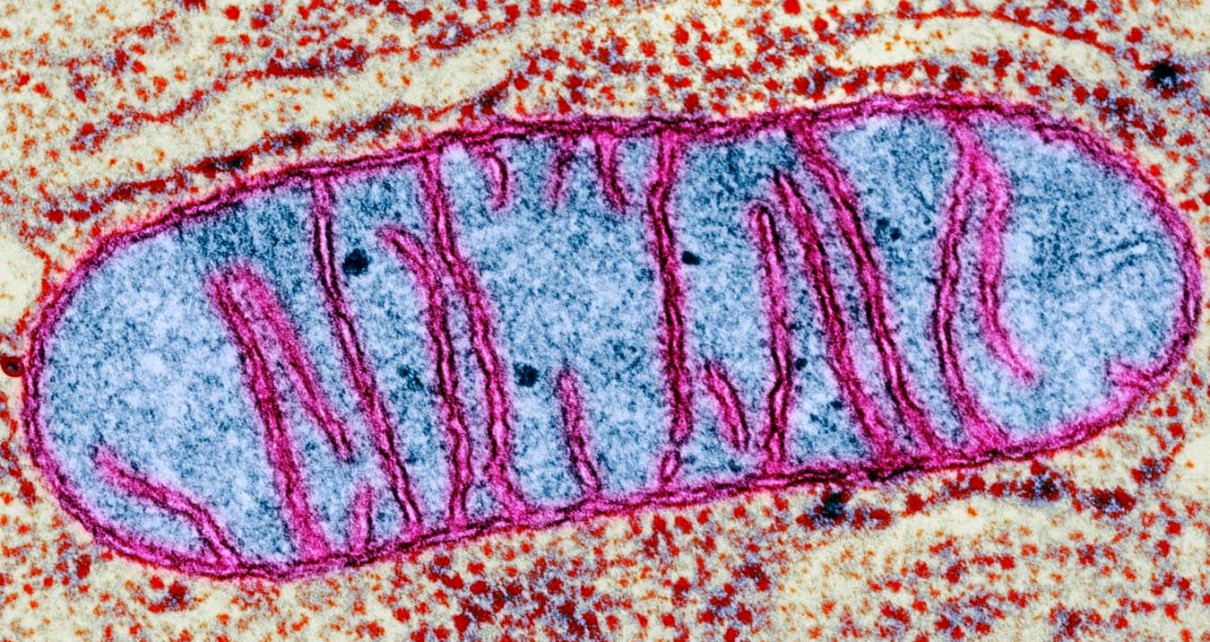[ad_1]

Mitochondria, like this one, are found inside our cells, but their ancestors would have been free-living bacteria
CNRI/SCIENCE PHOTO LIBRARY
Marine bacteria found in hot springs may be the closest living relatives of the ancient bacteria that transformed into mitochondria more than a billion years ago.
Mitochondria are structures found in all cells with a nucleus, also known as eukaryotes, and play a key role in producing energy to power the cell and thus the larger organism. They are thought to have evolved between about 1.6 and 1.8 billion years ago from a type of alphaproteobacteria – one of the most abundant groups of bacteria on Earth.
But we still don’t know which specific bacterium was responsible, says Otto Geiger at the National Autonomous University of Mexico.
To narrow down the potential suspects, Geiger and his colleagues surveyed all known genomes of alphaproteobacteria species on Earth today to identify those with traits most similar to those that they think belonged to the so-called proto-mitochondria.
The analysis involved surveying thousands of genomes and matching them against dozens of criteria, says Geiger. One of the key ones was the ability of the bacteria to produce two types of compounds called lipids, which are essential to mitochondria functioning, says Geiger.
One of these lipids, called ceramide, isn’t typically found in bacteria and is usually only produced in mitochondria. Along with the other key lipid, cardiolipin, it is involved in respiration and energy production in mitochondria.
The presence of genes to produce both lipids is important because together they also play a vital role in helping to signal that mitochondria in eukaryotes are damaged and need to be removed. This function is conserved in all eukaryotes, says Geiger, which suggests that the proto-mitochondria also possessed genes to produce both lipids.
The researchers concluded that marine bacteria found in hot springs in seas and oceans around the world had the traits most associated with the proto-mitochondria. The bacteria have previously been found in the Karmadon springs in Russia and Geiger says they can be found in Mexico too. These bacteria, belonging to the Iodidimonadales genus, are a good candidate because they are found only in locations with a high oxygen gradient, says Geiger.
“These bacteria really depend on oxygen,” says Gieger, in the same way that mitochondria do to produce energy. He says the original host of the proto-mitochondria, which ultimately evolved alongside the bacteria inside it to produce eukaryotes, is also likely to have lived in hot springs.
Geiger says this study isn’t the final word, though. “If we had done this study in 2015, we wouldn’t have been able to identify these bacteria,” says Geiger. “Because these bacteria had never been isolated before 2016.”
“I would not be surprised if in three, five or 10 years there is another candidate which is even closer to what we think could be the proto-mitochondria,” he says.
Topics:
[ad_2]
Source link




